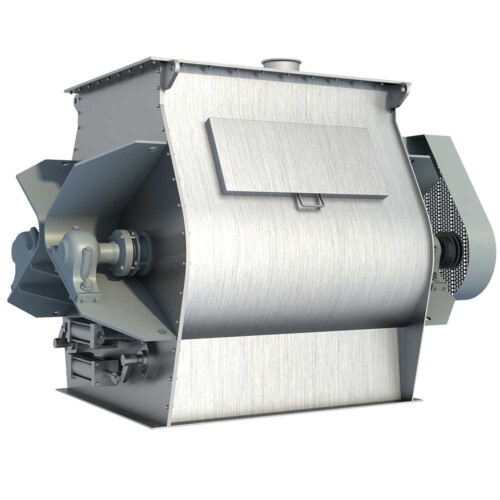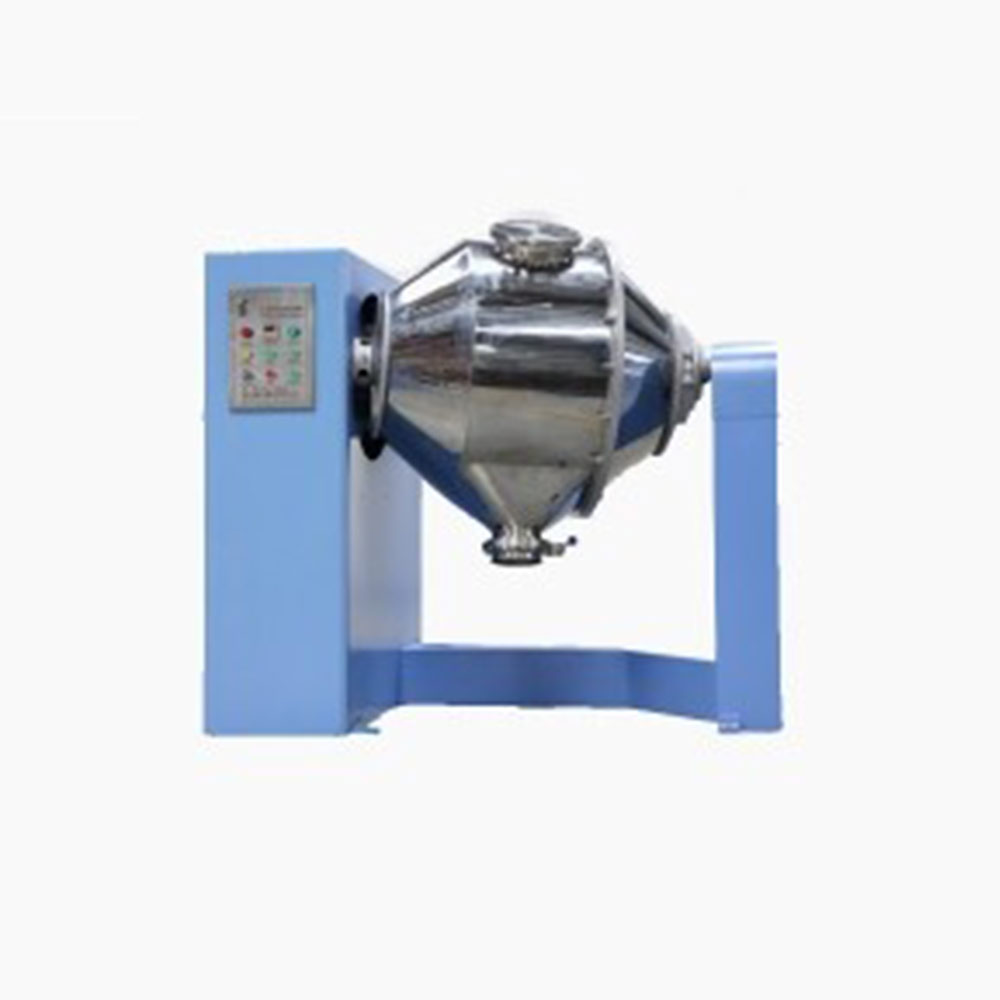Ask An Expert
Frequently Asked Questions
Yes, We can supply simple stand alone panels or automated PLC controlled systems. We normally install and test all controls on our mixers before they are shipped.
Yes, we normally test the mixers before they are shipped and mark out the wire need to connect on the control box.
We manufacture specialty mixing equipment for powder & bulk materials. Included are ribbon blender, plough mixer, conical screw mixer, twin shaft paddle mixer, V blender, double cone blender and other auxiliary equipment such as screw conveyor, quantitive auger filler.
We sell across the world, our cusotmers distribute 5 continents.
Share Us With Your Network
What Is Agglomeration?
Agglomeration, the sticking of particles to one another or to solid surfaces, is a natural phenomenon. For powders and bulk solids, agglomeration can be unwanted, resulting in uncontrolled buildup, caking, bridging, or lumping. It can also be a beneficial process, utilizing the controlled enlargement of particles to improve powder properties and obtain high-quality products.
Size enlargement through agglomeration is one of the four unit operations of mechanical process engineering (powder and bulk solids technologies). It involves combining particles to create products with new particle sizes. Products can come in many different forms—granules, tablets, briquettes, extrudates, pellets, bricks, or compacts—and/or they may have brand-related names.
Size enlargement through agglomeration is done to obtain a product with larger particle dimensions. The resulting entity is only apparently a new unit. The original solid particles are still present in the structure—often with completely unaltered shape and size—and are held together by binding mechanisms. Also, the new entity features porosity—void spaces between the agglomerate-forming particles. This porosity is beneficial for making easily dispersible food and pigment granules, for “designer” foods, and for catalyst carriers. It is undesirable in highly reactive materials for which pressure agglomeration (densification) is used for passivation.
Agglomeration also changes the bulk characteristics of particulate solids—usually for the better. Larger particles have less dust, exhibit improved flow behavior, and feature reduced sticking tendencies. Storage, handling, and feeding of materials with large particles are less risky, even for difficult materials.
Three methods enlarge particulate solids through agglomeration: tumble/growth agglomeration, pressure agglomeration, and agglomeration using heat (sintering).
In tumble/growth agglomeration, the adhesion of particles to one another is controlled by the competition between volume-related separation and surface-related adhesion forces. To cause permanent adhesion, the sum of all separation forces in the system (e.g., gravity, inertia, drag, etc.) must be smaller than the attraction forces between the adhering partners. If solids are in the micron, submicron, or nano range (starting at approximately 10 µm), adhesion occurs naturally even when the agglomerate-forming particles are dry. In the case of larger particles, adhesion forces must be produced by the addition of binders, or they must be enhanced by conditioning. Also, the probability of particle collisions must be increased by providing a high concentration of particulate solids. Such conditions are obtained in inclined disks (pans), rotating drums, powder mixers, and fluidized beds.
In pressure agglomeration, enlarged entities are formed by applying external forces to essentially dry particulate solids in more or less closed dies that define the shape of the agglomerated product. Since the level of force applied is the most distinguishing factor, there are low-, medium-, and high-pressure techniques. In low- and medium-pressure agglomeration, materials are passed (extruded) through openings in die plates; in high-pressure agglomeration, punch-and-die and roller presses are used. Compacts are often crushed and screened to yield granular products.
In agglomeration using heat (sintering), atoms and molecules begin to migrate across the interface where particles touch each other. This happens at a certain elevated temperature, which is different for various materials. While still in solid state, diffused matter forms bridge-like structures between the surfaces, which solidify upon cooling. In the posttreatment of agglomerates, this phenomenon produces strong permanent bonds and/or specific final properties in parts that may have been manufactured by virtually any of the other agglomeration techniques.
Agglomeration is not always used for size enlargement. In some technologies, agglomeration changes or improves the properties of particulate solids or modifies the surfaces of solids. The oldest such method is coating, which has evolved into an important field of solids processing and is used in almost all industries, often for functionalizing the surfaces of agglomerates. Other new and innovative technologies manipulate individual particles. For example, ultrafine particles are deposited onto substrates in a controlled manner and subsequently bonded with the base material or with one another to create microdevices or microstructures.
Wolfgang Pietsch, PhD, is a senior consultant at Compactconsult Inc. (Naples, FL). He received BS and MS degrees in mechanical and chemical engineering and a PhD in agglomeration. A researcher, teacher, process developer, designer, vendor, and user of mechanical process technologies, Pietsch holds nine patents and is the author of more than 170 papers and five books, including Size Enlargement by Agglomeration, Agglomeration Processes—Phenomena, Technologies, Equipment, and Agglomeration in Industry—Occurrence and Applications.
Ask An Expert


















